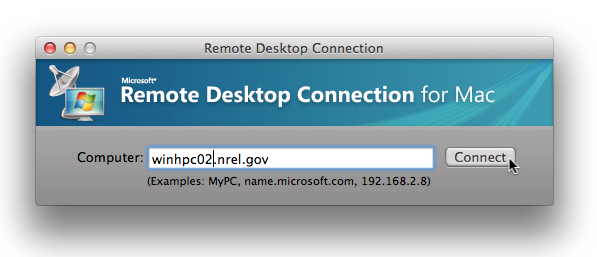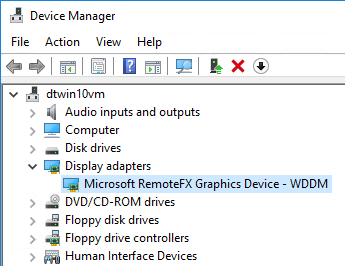RemoteFX has a remote code execution vulnerability (CVE-2020-1036) that has no patch to fix. As a result, Microsoft decides to remove the RemoteFX feature to eliminate the risk. IMPORTANT: continue using RemoteFX poses security risk to your system. Use it at your own risk or stop using RemoteFX to avoid the risk. The power and promise of RemoteFX. Microsoft dives in for the kill on virtual desktops. In addition to needing to buy a graphics card for your remote desktop server, you need a lot of graphics card memory for each RemoteFX-based remote screen running on that server. (A single 1900x1200 screen requires 220 MB of memory.). The next step towards enabling Microsoft RemoteFX USB redirection is to download the right app version for your OS and install it on your host PC, then repeat for all your machines. Run the app on your host and log into your FlexiHub account to see the list of peripherals you can share from it.
Microsoft rolled out new Windows 10 and Windows Server cumulative updates today, and in addition to all the fixes and security patches that are included, this new release also brings an important change for RemoteFX vGPU users.
Beginning with this patching cycle, RemoteFX vGPU is officially disabled in all Windows Server versions, and Microsoft says that it made this decision because of security reasons.
A security vulnerability in RemoteFX vGPU, which affects all Windows Server versions, could allow an attacker to run arbitrary code on the impacted system. After effect cs6. There’s no patch for this vulnerability, and Microsoft decided to disable the feature completely to eliminate all security risks.
“A remote code execution vulnerability exists when Hyper-V RemoteFX vGPU on a host server fails to properly validate input from an authenticated user on a guest operating system. To exploit the vulnerability, an attacker could run a specially crafted application on a guest operating system, attacking certain third-party video drivers running on the Hyper-V host. This could then cause the host operating system to execute arbitrary code,” Microsoft explains in CVE-2020-1036.
- Information,12/1/2017 1:00:51 PM,Microsoft-Windows-RemoteDesktopServices-RdpCoreTS,141,RemoteFX module,PerfCounter session started with instance ID 3 Information,12/1/2017 1:00:51 PM,Microsoft-Windows-RemoteDesktopServices-RdpCoreTS,72,RemoteFX module,Interface method called: SendPolicyData Information,12/1/2017 1:00:51 PM,Microsoft-Windows.
- Microsoft’s RemoteFX, part of Remote Desktop Protocol (RDP) and included in Windows Server 2008 R2 SP1, is designed to provide a complete, rich, local-like desktop experience for hosted desktops and applications. A big part of delivering that experience is the ability to virtualize GPUs. Engineers at Intel and Microsoft have been working.
Microsoft Remotefx Warning

Microsoft Remotefx Download
However, Microsoft itself explains that right now, it’s not aware of any exploits and attacks happening in the wild, and the company reveals that “exploitation is less likely.” As it further notes, a successful attack requires a crafted app to run on an exposed system, so blocking such attempts would be a good idea to make sure your data is protected.
RemoteFX vGPU is a feature that debuted in Windows 7 and allows multiple virtual machines to use the same physical GPU. However, due to security issues, Microsoft announced a gradual retirement of the feature, beginning with its deprecation that happened in Windows 10 version 1809 and Windows Server 2019. Open excel manual calculation mode.
Microsoft Remotefx Usb Redirection Download
Today’s updates indeed disable the feature, but until February 2021 users can enable RemoteFX vGPU manually using the Hyper-V Manager or PowerShell cmdlets.

On February 9, 2021, however, Microsoft will completely remove the feature from its operating systems, and at that point, enabling it back would no longer be possible. The company recommends everyone to switch to an alternative vGPU system.
“The current implementation of RemoteFX vGPU appears susceptible to security vulnerabilities. Because these newly identified vulnerabilities are architectural in nature, and the feature is already removed from newer versions of Windows, the July 14, 2020 security updates and all superseding Windows Updates will disable and remove the RemoteFX vGPU feature. Starting with the July 14, 2020 security updates, this and all superseding Windows Updates will disable the RemoteFX vGPU feature,” the company says.
After installing today’s updates, if you’re trying to launch a virtual machine configured with the RemoteFX adapter, you’ll get the following error messages:


“The virtual machine cannot be started because all the RemoteFX-capable GPUs are disabled in Hyper-V Manager.”“The virtual machine cannot be started because the server has insufficient GPU resources.”
On the other hand, if you try to reenable the vGPU, you’ll also get a security warning:
'We no longer support the RemoteFX 3D video adapter. If you are still using this adapter, you may become vulnerable to security risk. Learn more (https://go.microsoft.com/fwlink/?linkid=213976)”
The bad news is that computers where Windows 10 version 1607 or earlier are installed have no other option than upgrading to a newer release, as alternatives to the disabled feature do not exist. Microsoft explains the following:
Microsoft Remotefx Usb Redirection
“Secure GPU virtualization is available through Discrete Device Assignment (DDA) in Windows Server LTSC releases (Windows Server 2016 and Windows Server 2019) and Windows Server SAC releases (Windows Server, version 1803 and later versions). If you are on a Windows version earlier than Windows 10, version 1607, please consider upgrading.”
Microsoft Remotefx Warning
The list of cumulative updates that disable RemoteFX vGPU is available here.



